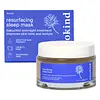What's inside
What's inside
 Key Ingredients
Key Ingredients

 Benefits
Benefits

 Concerns
Concerns

No concerns
 Ingredients Side-by-side
Ingredients Side-by-side

Water
Skin ConditioningCaprylic/Capric Triglyceride
MaskingCetearyl Alcohol
EmollientButylene Glycol
HumectantGlycerin
HumectantCyclodextrin
AbsorbentSorbitan Stearate
EmulsifyingCetyl Ethylhexanoate
EmollientDaucus Carota Sativa Root Water
MaskingCamellia Japonica Flower Extract
EmollientRubus Chamaemorus Seed Oil
Skin ConditioningSodium Hyaluronate
HumectantEctoin
Skin ConditioningBehenic Acid
CleansingEclipta Prostrata Extract
Skin ConditioningPolyacrylate Crosspolymer-6
Emulsion StabilisingBisabolol
MaskingCeramide NP
Skin ConditioningCeramide AP
Skin ConditioningPhytosphingosine
Skin ConditioningCholesterol
EmollientRhynchosia Nulubilis Seed Extract
AntioxidantRetinal
Skin ConditioningLonicera Japonica Flower Extract
Skin ConditioningDextrin
AbsorbentPolygonum Multiflorum Root Extract
Skin ConditioningMoringa Oleifera Seed Oil
EmollientCeramide EOP
Skin ConditioningPolyacrylate-13
Hydroxyethyl Acrylate/Sodium Acryloyldimethyl Taurate Copolymer
Emulsion StabilisingSesamum Indicum Seed Extract
Skin ConditioningMelia Azadirachta Leaf Extract
Skin ConditioningGardenia Florida Fruit Extract
Skin ConditioningLonicera Caprifolium Flower Extract
PerfumingHydrogenated Polyisobutene
EmollientMethylpropanediol
SolventPotassium Sorbate
PreservativeSodium Cetearyl Sulfate
CleansingPolyglyceryl-6 Behenate
Emulsion StabilisingGlyceryl Caprylate
EmollientHydroxyacetophenone
AntioxidantPhytosteryl/Octyldodecyl Lauroyl Glutamate
Skin ConditioningSucrose Cocoate
EmulsifyingPolyglyceryl-10 Laurate
Skin ConditioningEthylhexyl Palmitate
EmollientSorbitan Isostearate
EmulsifyingPolyglyceryl-10 Stearate
Skin ConditioningPentylene Glycol
Skin Conditioning1,2-Hexanediol
Skin ConditioningTriethyl Citrate
MaskingTocopherol
AntioxidantSodium Levulinate
Skin ConditioningGlyceryl Stearate
EmollientSorbitan Olivate
EmulsifyingEthylhexylglycerin
Skin ConditioningCetearyl Olivate
Propanediol
SolventWater, Caprylic/Capric Triglyceride, Cetearyl Alcohol, Butylene Glycol, Glycerin, Cyclodextrin, Sorbitan Stearate, Cetyl Ethylhexanoate, Daucus Carota Sativa Root Water, Camellia Japonica Flower Extract, Rubus Chamaemorus Seed Oil, Sodium Hyaluronate, Ectoin, Behenic Acid, Eclipta Prostrata Extract, Polyacrylate Crosspolymer-6, Bisabolol, Ceramide NP, Ceramide AP, Phytosphingosine, Cholesterol, Rhynchosia Nulubilis Seed Extract, Retinal, Lonicera Japonica Flower Extract, Dextrin, Polygonum Multiflorum Root Extract, Moringa Oleifera Seed Oil, Ceramide EOP, Polyacrylate-13, Hydroxyethyl Acrylate/Sodium Acryloyldimethyl Taurate Copolymer, Sesamum Indicum Seed Extract, Melia Azadirachta Leaf Extract, Gardenia Florida Fruit Extract, Lonicera Caprifolium Flower Extract, Hydrogenated Polyisobutene, Methylpropanediol, Potassium Sorbate, Sodium Cetearyl Sulfate, Polyglyceryl-6 Behenate, Glyceryl Caprylate, Hydroxyacetophenone, Phytosteryl/Octyldodecyl Lauroyl Glutamate, Sucrose Cocoate, Polyglyceryl-10 Laurate, Ethylhexyl Palmitate, Sorbitan Isostearate, Polyglyceryl-10 Stearate, Pentylene Glycol, 1,2-Hexanediol, Triethyl Citrate, Tocopherol, Sodium Levulinate, Glyceryl Stearate, Sorbitan Olivate, Ethylhexylglycerin, Cetearyl Olivate, Propanediol
Water
Skin ConditioningCucumis Sativus Fruit Water
Skin ConditioningGlyceryl Stearates
EmollientGlycerin
HumectantLeuconostoc/Radish Root Ferment Filtrate
AntimicrobialSqualane
EmollientCellulose
AbsorbentBakuchiol
AntimicrobialAdansonia Digitata Seed Oil
EmollientSimmondsia Chinensis Seed Oil
EmollientCaramel
Cosmetic ColorantSodium Dehydroacetate
PreservativeBaptisia Tinctoria Root Extract
Skin ConditioningCitric Acid
BufferingBeta-Glucan
Skin Conditioning
 Reviews
Reviews

Ingredients Explained
These ingredients are found in both products.
Ingredients higher up in an ingredient list are typically present in a larger amount.
Glycerin is already naturally found in your skin. It helps moisturize and protect your skin.
A study from 2016 found glycerin to be more effective as a humectant than AHAs and hyaluronic acid.
As a humectant, it helps the skin stay hydrated by pulling moisture to your skin. The low molecular weight of glycerin allows it to pull moisture into the deeper layers of your skin.
Hydrated skin improves your skin barrier; Your skin barrier helps protect against irritants and bacteria.
Glycerin has also been found to have antimicrobial and antiviral properties. Due to these properties, glycerin is often used in wound and burn treatments.
In cosmetics, glycerin is usually derived from plants such as soybean or palm. However, it can also be sourced from animals, such as tallow or animal fat.
This ingredient is organic, colorless, odorless, and non-toxic.
Glycerin is the name for this ingredient in American English. British English uses Glycerol/Glycerine.
Learn more about GlycerinWater. It's the most common cosmetic ingredient of all. You'll usually see it at the top of ingredient lists, meaning that it makes up the largest part of the product.
So why is it so popular? Water most often acts as a solvent - this means that it helps dissolve other ingredients into the formulation.
You'll also recognize water as that liquid we all need to stay alive. If you see this, drink a glass of water. Stay hydrated!
Learn more about Water